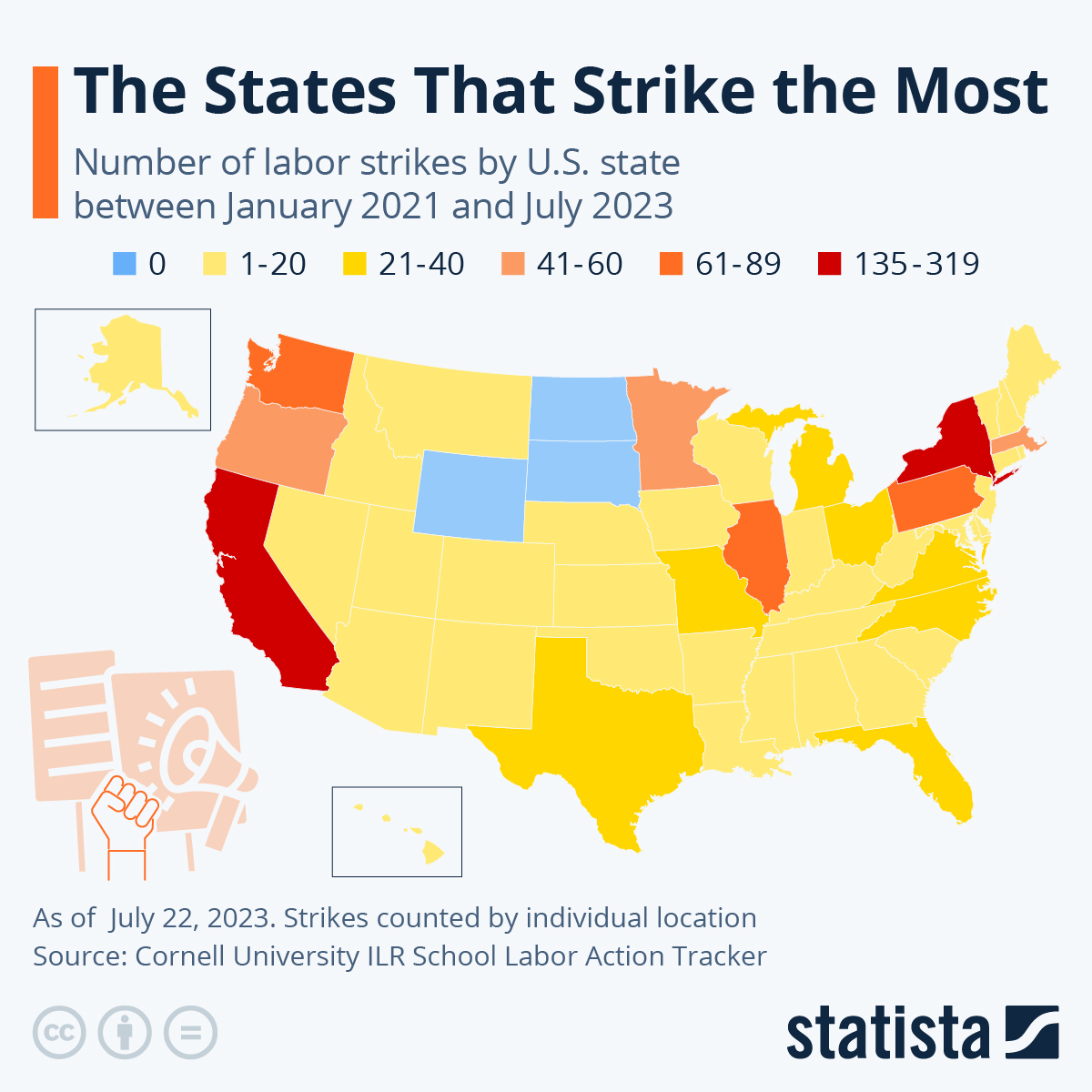UPS employees are edging closer to a major work stoppage that could be the biggest the United States has seen since the 1950s. The approximately 330,000 UPS drivers, loaders and handlers who are represented by the Teamsters Union on Wednesday rejected a final offer by the company as "unacceptable" in early July, CBS reports. Talks are now being presumed as the group's labor contract runs out at the end of the month.
Strikes and work stoppages have returned as a mainstay of U.S. news among recent high profile walkouts, for example at the Writers Guild of America, among newly unionized Starbucks employees and Amazon drivers, also represented by the Teamsters. But not every part of the U.S. sees an equal amount of these strikes, data from Cornell University suggest. While California registered the most strikes since the beginning of 2021 by far at more than 300 individual actions, Texas only registered 33 despite having around three quarters of California's population.
The same is true for the states of Florida and New York. Despite about equal populations, New York state saw more than 100 strikes in 2.5 years, while Florida only experienced 24 listed by Cornell - showcasing a divide between blue and red states when it comes to strikes. West Coast states Oregon and Washington as well as East Coast state Massachusetts also saw more strikes than suggested by their populations. An outlier in this logic was Missouri, which registered 33 strikes—three more than Texas—with many of them centering on St. Louis. Other cities outside the major centers experiencing a lot of strikes in the specified time frame were Minneapolis, Pittsburgh and Buffalo, where the Starbucks unionization drive started.
The Guardian newspaper identifies the recent developments in the U.S. as a "new wave of organizing" while also concluding that the affected corporations have been engaged in counterattacks, including the firing of workers and the closing down of unionized or unionizing stores. The article also rates U.S. laws as weak in regard to protecting workers who want to unionize. In addition, many Republican-dominated U.S. states have passed so-called Right to Work laws, which prohibit mandatory union membership - contributing to regional differences in the number of union members and strikes.





















